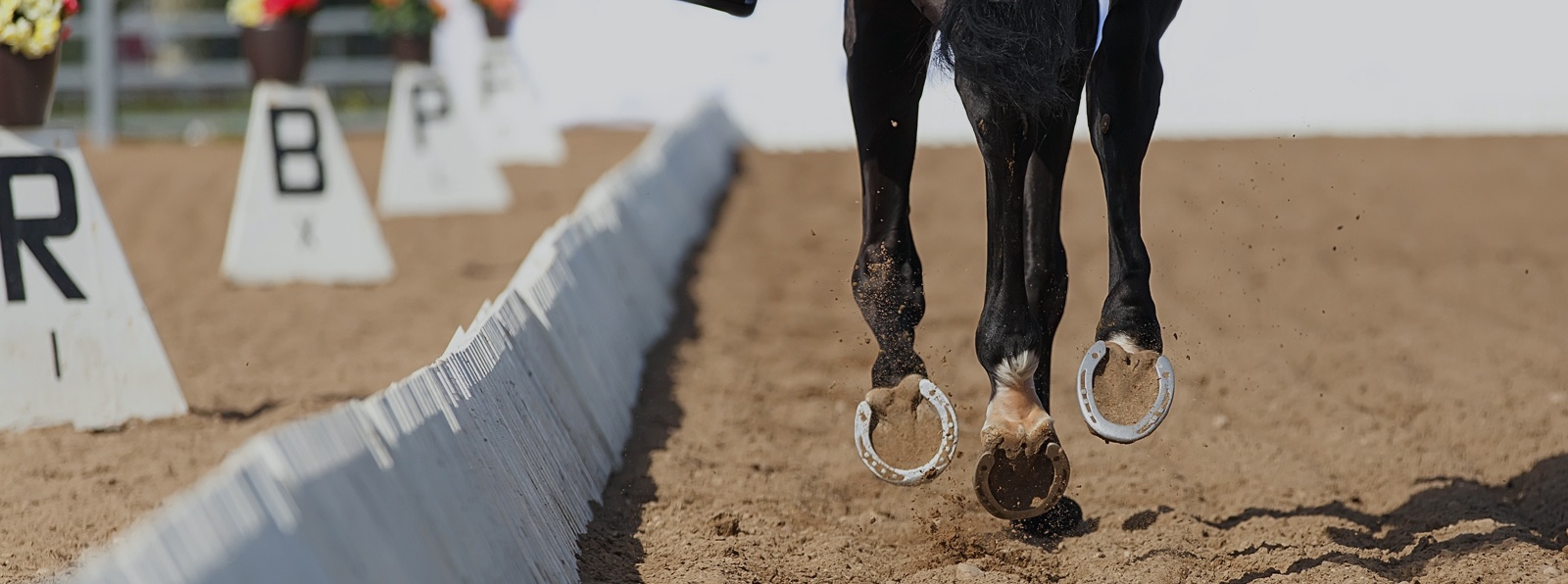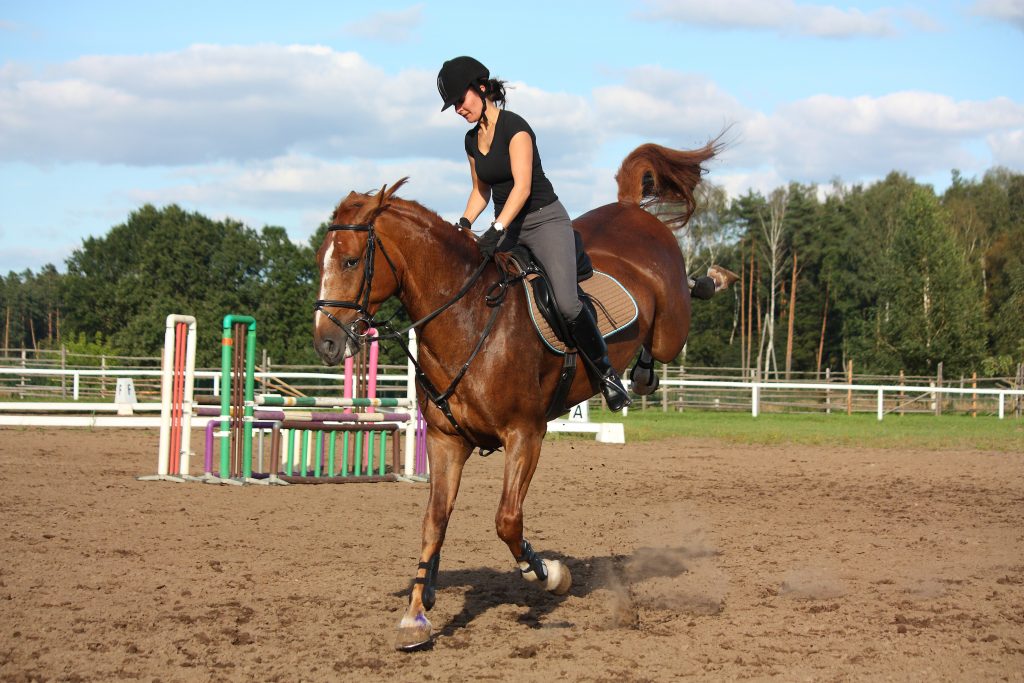Hoof Health Mastery: Essential Tips for Every Horse Owner
The foundation of equine health literally begins from the ground up, making hoof care one of the most critical aspects of responsible horse ownership. In the United Kingdom, where over 800,000 horses and ponies navigate diverse terrains from muddy fields to purpose-built arenas, understanding and implementing proper hoof care has never been more essential.
This comprehensive guide draws upon the latest research and best practices from leading UK veterinary institutions and farriery professionals to provide horse owners with the knowledge and tools necessary to maintain optimal hoof health throughout their horse’s life.
Understanding Hoof Anatomy: The Foundation of Care
The equine hoof is a remarkable structure that bears the full weight of the horse whilst providing shock absorption, traction, and protection to sensitive internal structures. The British Horse Society emphasises that “understanding how the hoof is formed allows for better and appropriate routine care to be given.”
External Hoof Structures
The visible portions of the hoof include several key components:
Hoof Wall: The hard, keratinised structure that grows continuously from the coronet band downward. The British Horse Society notes that “the hoof wall should be free from any cracks” and that “as a guide the hoof should slope at approximately 45 degrees when on a flat, even surface and this angle should also match the pastern.”
Sole: The ground-bearing surface that should be slightly concave and thick enough to protect internal structures whilst remaining flexible enough to aid in shock absorption.
Frog: The V-shaped structure that aids in circulation, provides traction, and acts as a shock absorber. The frog should be firm yet yielding, free from the foul-smelling discharge characteristic of thrush.
White Line: The junction between the hoof wall and sole, visible as a light-coloured line around the perimeter of the sole. This structure is particularly vulnerable to separation and infection.
Internal Structures
Beneath the visible hoof lies a complex network of sensitive tissues including the laminae, which connect the hoof wall to the pedal bone, and an extensive vascular system that nourishes the hoof and aids in shock absorption.
Daily Hoof Care: Building the Foundation
The Essential Daily Routine
The British Horse Society establishes that “whether a horse is stable or field-kept, routinely picking feet out at least once a day ensures good hygiene and monitoring.” This daily practice serves multiple purposes beyond simple cleaning.
Daily Hoof Care Checklist:
| Task | Purpose | What to Look For |
|---|---|---|
| Pick out debris | Prevent infection, monitor condition | Stones, dirt, foreign objects |
| Inspect hoof wall | Identify cracks or damage | Cracks, splits, horizontal lines |
| Check sole | Assess for bruising or sensitivity | Discolouration, soft spots |
| Examine frog | Monitor for thrush | Black discharge, foul odour |
| Assess white line | Look for separation | Cavities, crumbling horn |
| Check shoes (if shod) | Ensure security and wear | Loose nails, worn shoes, raised clenches |
Proper Hoof-Picking Technique
Correct technique ensures safety whilst maximising the effectiveness of daily hoof care:
- Positioning: Stand facing the horse’s tail, ensuring the horse is aware of your presence
- Lifting: Run your hand down the leg and apply gentle pressure to signal the horse to lift the foot
- Support: Hold the hoof securely, supporting the horse’s weight
- Cleaning: Work from heel to toe with steady, firm strokes
- Attention to Detail: The British Horse Society advises to “pay attention to the deep channels either side of the frog and at the heels under the ends of the shoe where it’s easy for fragments to become trapped”
Common Hoof Diseases and Disorders
Laminitis: The Silent Threat
Laminitis remains one of the most serious hoof-related conditions affecting UK horses. The Royal Veterinary College describes it as “a common, extremely painful and frequently recurrent condition in horses, ponies and donkeys” with “significant welfare implications.”
Risk Factors:
- Obesity and insulin resistance
- High-sugar diets
- Concurrent illness
- Concussion from hard surfaces
- Hormonal disorders (PPID/Cushing’s disease)
Prevention Strategies:
- Maintain appropriate body condition (BCS 4-6/9)
- Limit access to lush pasture, particularly in spring
- Provide regular exercise
- Monitor for early signs of metabolic disorders
Thrush: The Bacterial Invader
Thrush affects the frog and its surrounding grooves, thriving in moist, anaerobic conditions. The British Horse Society identifies characteristic signs including “black, foul-smelling discharge from the frog clefts.”
Prevention and Treatment:
- Maintain clean, dry environments
- Regular hoof picking to remove debris
- Apply antiseptic solutions (iodine) to affected areas
- Improve drainage in paddocks and stables
White Line Disease (Seedy Toe)
The British Horse Society describes this condition as creating “a noticeable cavity around the white line” with horn becoming “crumbly.” Treatment typically involves farriery to expose affected areas to oxygen and maintain strict hygiene protocols.
Hoof Abscesses
Abscesses represent one of the most common causes of sudden, severe lameness. The British Horse Society notes that “bacteria gets trapped” causing “sudden and severe lameness” as “infection builds a large amount of pressure within the hoof.”
Management Protocol:
- Veterinary or farrier assessment using hoof testers
- Drainage of the abscess to relieve pressure
- Poulticing to draw out infection
- Tubbing with warm water and Epsom salts (15 minutes daily)
- Tetanus protection and antibiotic therapy as prescribed
Professional Hoof Care: Farriery and Veterinary Support
The UK Farriery Standards
In the United Kingdom, farriery is regulated under the Farriers (Registration) Act 1975. The Farriers Registration Council ensures that only registered farriers may shoe horses, maintaining high standards of competence and welfare.
Farrier Visit Schedule:
- Shod horses: Every 4-6 weeks
- Barefoot horses: Every 6-8 weeks (or as advised)
- Growing horses: More frequent assessment may be required
When to Seek Veterinary Attention
Stride Vets in Farnham, an independent equine practice covering Surrey, Hampshire, and surrounding counties, emphasises that early intervention often leads to better outcomes. Their mobile veterinary services include on-site diagnostic capabilities using portable X-ray, ultrasound, and endoscopic equipment.
Emergency Veterinary Situations:
- Sudden, severe lameness
- Penetrating wounds to the hoof
- Signs of laminitis (increased digital pulse, reluctance to move)
- Non-healing infections
- Suspected fractures within the hoof
Routine Veterinary Assessment:
- Annual health examinations including hoof evaluation
- Radiographic assessment of chronic conditions
- Nutritional consultation for metabolic disorders
- Pain management for degenerative conditions
Nutritional Support for Hoof Health
Essential Nutrients for Hoof Growth
The British Horse Society recommends “feeding a balanced high forage diet will ensure that vitamins and minerals are obtained, allowing healthy hoof growth.”
Key Nutrients for Hoof Health:
| Nutrient | Function | Sources | Daily Requirements |
|---|---|---|---|
| Biotin (Vitamin B7) | Strengthens horn bonds | Grass, supplements | 15-25mg for poor quality hooves |
| Methionine | Amino acid for horn structure | High-quality protein | 2-3g per day |
| Zinc | Horn quality and healing | Balanced feeds | 40-50mg per kg body weight |
| Copper | Collagen formation | Fortified feeds | 10-15mg per kg body weight |
| Calcium | Structural integrity | Limestone, lucerne | 0.3-0.5% of dry matter intake |
Biotin Supplementation
Research demonstrates that biotin supplementation can significantly improve hoof quality in horses with poor horn. UK studies indicate that “naturally occurring biotin, with suitable amino acid and fatty acid balance will support hoof growth and quality.”
Biotin Supplementation Guidelines:
- Duration: Minimum 9-12 months for visible improvement
- Dosage: 15-25mg daily for horses with poor hoof quality
- Timing: Best absorbed when given with feed
- Monitoring: Regular assessment with farrier for progress evaluation
Environmental Management for Hoof Health
Stable Management
Proper stable management significantly impacts hoof health through moisture control and hygiene maintenance.
Optimal Stable Conditions:
- Regular mucking out to prevent ammonia buildup
- Dry bedding changed frequently
- Adequate drainage to prevent standing water
- Hard-standing areas for dry conditions
- Ventilation to reduce humidity
Pasture Management
Field conditions directly affect hoof health, particularly regarding moisture levels and ground hardness.
Pasture Considerations:
- Provide shelter and hard-standing during wet periods
- Rotate grazing to prevent overuse and mud formation
- Install drainage in problem areas
- Consider track systems for year-round turnout
- Monitor for toxic plants that may affect circulation
Seasonal Adaptations
UK weather patterns require seasonal adjustments to hoof care protocols.
Winter Considerations:
- Increased moisture exposure requiring more frequent cleaning
- Application of hoof dressings to prevent excessive softening
- Monitoring for mud fever extending to the coronet
- Ensuring adequate nutrition during limited grazing periods
Summer Management:
- Protection from excessive drying and cracking
- Regular moisturising with appropriate products
- Monitoring for increased stone bruising on hard ground
- Fly protection to prevent stamping and trauma
Advanced Hoof Care Technologies
Diagnostic Advances
Modern veterinary practice has revolutionised hoof problem diagnosis through advanced imaging techniques.
Available Diagnostic Tools:
- Digital radiography for bone and joint assessment
- Ultrasound for soft tissue evaluation
- MRI for comprehensive internal imaging
- Computed tomography for complex cases
- Thermography for circulation assessment
Stride Vets represents this modern approach, with “portable equipment, such as X-ray, ultrasound, endoscope and dentistry” enabling on-site diagnosis and early intervention.
Therapeutic Shoeing Options
Contemporary farriery offers numerous therapeutic shoeing options for specific conditions:
Specialised Shoes and Pads:
- Heart-bar shoes for laminitis support
- Graduated heel shoes for navicular disease
- Eggbar shoes for heel pain
- Silicone-filled pads for sole protection
- Frog support pads for circulation
Alternative Hoof Care Approaches
The UK has seen growing interest in barefoot management and equine podiatry as alternatives to traditional shoeing.
Barefoot Management:
- Gradual transition over 6-12 months
- Emphasis on natural movement and diet
- Specialised trimming techniques
- Protective boots for varied terrain
- Close monitoring during transition period
Equine Podiatry: The Equine Podiatry Association describes equine podiatrists as specialists “seeking help with lameness issues relating to the foot” who “do not fit shoes” but focus on natural hoof function and rehabilitation.
Emergency Hoof Care Protocols
Penetrating Injuries
Penetrating hoof injuries require immediate professional attention. The British Horse Society states unequivocally that “any penetrating injury should be immediately seen by a vet.”
Emergency Response Protocol:
- Do not remove the penetrating object
- Confine the horse to prevent further movement
- Contact veterinarian immediately
- Photograph the injury for reference
- Apply temporary bandaging around (not over) the object
- Ensure tetanus protection is current
Sudden Lameness
Sudden onset lameness requires systematic evaluation to determine the cause and appropriate treatment.
Assessment Steps:
- Observe the horse at rest and in motion
- Palpate for heat and increased digital pulse
- Use hoof testers to localise pain
- Check for obvious injuries or foreign objects
- Provide pain relief only under veterinary guidance
Long-term Hoof Health Strategies
Record Keeping
Maintaining detailed records enables pattern recognition and early intervention.
Essential Records:
- Farrier visit dates and observations
- Shoeing/trimming cycles and modifications
- Lameness episodes and treatments
- Seasonal changes in hoof quality
- Dietary modifications and supplements
- Environmental changes and their effects
Preventive Health Programmes
Comprehensive health programmes address hoof health within the context of overall equine wellness.
Annual Health Assessment:
- Complete physical examination including hooves
- Nutritional evaluation and recommendations
- Farriery assessment and planning
- Vaccination and parasite control
- Exercise programme evaluation
Owner Education and Skills Development
Continued education enables owners to provide optimal care and recognise problems early.
Key Skills for Horse Owners:
- Proper hoof-picking technique
- Recognition of normal vs. abnormal hoof characteristics
- Basic first aid for hoof injuries
- Understanding of farriery principles
- Nutritional knowledge for hoof health
Quality Assurance in Hoof Care Products
Selecting Appropriate Hoof Dressings
The market offers numerous hoof care products, each designed for specific conditions and purposes.
Product Categories:
- Moisturisers for dry, brittle hooves
- Hardeners for soft, weak horn
- Antiseptics for infection prevention
- Penetrating oils for deep conditioning
- Protective barriers against moisture
Selection Criteria:
- Specific hoof condition being addressed
- Environmental conditions
- Horse’s individual needs
- Veterinary or farrier recommendations
- Product reputation and research backing
Feed and Supplement Quality
Quality assurance in nutritional products ensures optimal benefit delivery.
Quality Indicators:
- BETA NOPS approval for supplements
- UFAS certification for feed mills
- Clear labelling with guaranteed analysis
- Batch tracking and expiry dating
- Research supporting efficacy claims
Building Professional Relationships
Establishing a Care Team
Successful hoof health management requires collaboration between multiple professionals.
Core Team Members:
- Veterinary surgeon for health issues and diagnosis
- Registered farrier for routine care and therapeutic shoeing
- Equine nutritionist for dietary optimisation
- Physiotherapist for biomechanical assessment
- Equine podiatrist for barefoot management (if applicable)
Communication Protocols
Effective communication between team members ensures continuity of care and optimal outcomes.
Information Sharing:
- Regular updates between farrier and veterinarian
- Detailed record keeping accessible to all team members
- Clear treatment plans with defined roles
- Emergency contact protocols
- Progress monitoring and plan adjustments
Future Directions in Hoof Health
Research Developments
Ongoing research continues to advance our understanding of hoof health and disease prevention.
Current Research Areas:
- Genetic factors in hoof quality
- Microbiome effects on hoof health
- Advanced biomechanical analysis
- Novel therapeutic approaches
- Environmental impact studies
Technology Integration
Technology continues to enhance hoof care through improved monitoring and treatment options.
Emerging Technologies:
- Wearable sensors for gait analysis
- 3D printing for custom therapeutic devices
- Advanced imaging for early disease detection
- Smartphone apps for hoof assessment
- Telemedicine consultations for remote areas
Conclusion
Mastering hoof health requires dedication, knowledge, and collaboration between horse owners and professional care providers. The foundation begins with daily attention to detail, proper environmental management, and appropriate nutrition, supported by regular professional care from qualified farriers and veterinarians.
The British Horse Society reminds us that “early intervention is most likely to result in a positive outcome,” emphasising the importance of vigilant observation and prompt action when problems arise.
The UK’s regulatory framework, through organisations such as The Farriers Registration Council and professional veterinary practices like Stride Vets in Farnham, ensures high standards of care whilst promoting continued advancement in hoof health management.
Success in hoof health management stems from understanding that every horse is an individual with unique needs, influenced by genetics, environment, use, and management. By combining traditional horsemanship wisdom with modern scientific knowledge, UK horse owners can provide their animals with the foundation for a lifetime of soundness and performance.
The investment in proper hoof care pays dividends not only in terms of reduced veterinary costs and fewer lameness episodes but, more importantly, in the welfare and quality of life of our equine partners. Through commitment to excellence in hoof health management, we honour our responsibility as stewards of these magnificent animals whilst ensuring they can fulfil their potential, whether as competition horses, beloved companions, or anything in between.
Remember that hoof health is not merely about preventing disease but about optimising function, comfort, and performance throughout the horse’s life. With proper care, attention, and professional support, every horse owner can achieve mastery in this essential aspect of equine husbandry, providing their horses with the solid foundation they need to thrive.


